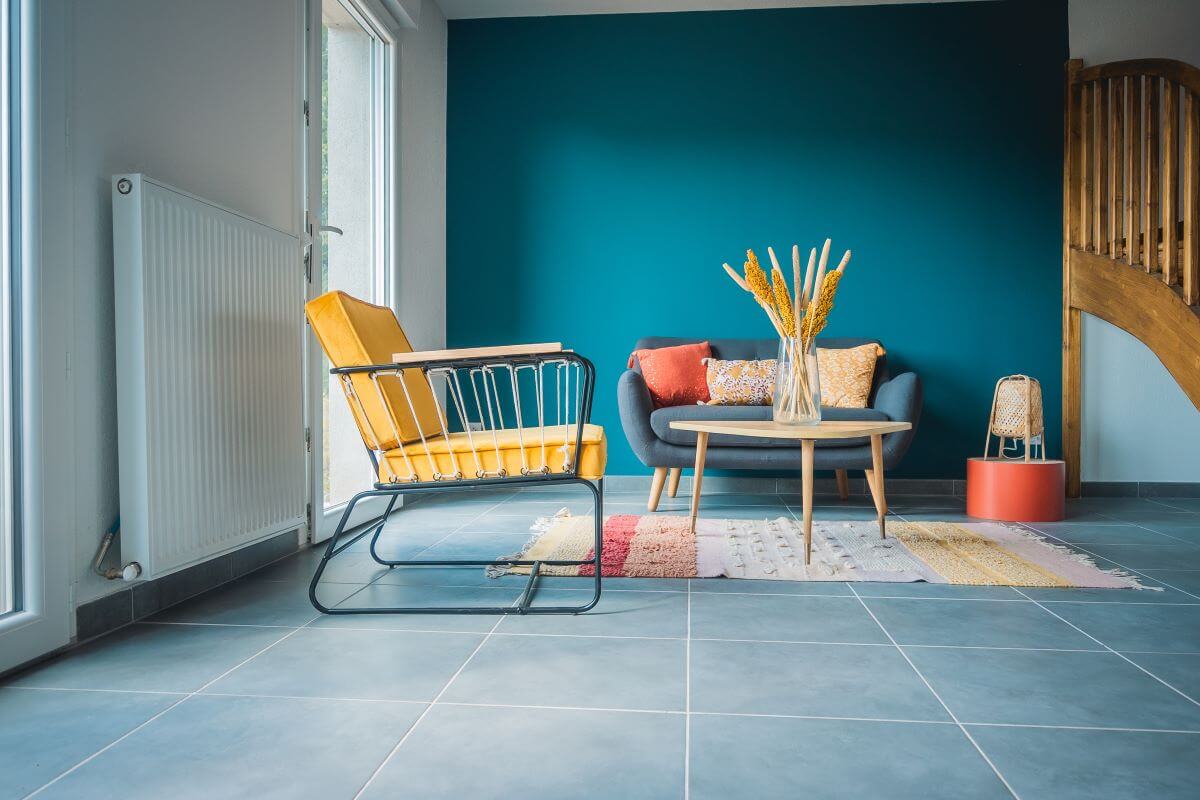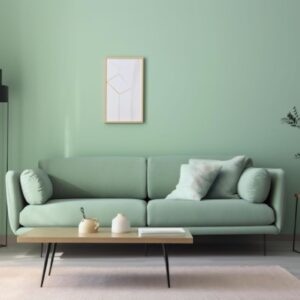
Are you familiar with color psychology? If you’re planning to redecorate your home with different home decor styles, you should be. Some colors affect our emotions in various ways. Colors elicit emotions like irritability, and some shades promote feelings of calm and relaxation. It’s wise to keep these home decor ideas in mind when decorating your home.
You can reduce your options and give your space the exact feel you want by using room color psychology to learn about the meanings of the various colors.
Introduction to color psychology in home decor
According to the theory of color psychology, each color has a different impact on a person’s mood, cognitive abilities, creativity, and productivity. A person feels calm when surrounded by soothing colors. However, when surrounded by loud, vibrant colors a person feels energized and passionate. White and grey, for example, are calm neutral colors.
The foundation of color psychology is the study of how the human brain responds to various shades of each color in the spectrum. Although the effects of the colors may appear to be similar, studies show that every person reacts differently to conventional color schemes.
The science behind color psychology
The colors used in rooms are given careful thought. The color scheme you choose to use will depend on the atmosphere you want to create in a room as well as how much time people will be spending there.
The occupants of a room may perceive different colors differently depending on a variety of factors, including temperature, light, surroundings, and more. Every person may react differently, so if a room will be used the most by one person, as in the case of a bedroom, it’s important to take their personality and their opinions on colors into account.
Choosing the right colors for different rooms
Livingroom
White and various shades of off-white and cream are good choices if you want your living room walls to serve as a backdrop for bolder colors in your furniture, rugs, and accessories.
Neutral shades of grey are still in style, useful in family home interior design ideas and simple to layer with other shades of grey elsewhere in the room or accent with a pop of vivid color. Blues, from the calming ocean tones of teal to sophisticated darks, are a recent favorite and still a go-to in many homes.
Kitchen
White-painted walls can be the ideal complement, maintaining the overall look’s crispness and cleanliness. For a cozy contrast, use wood in the flooring or on the dining room table and chairs.
Additionally, grey, deep blue, and even black units can look great against white or off-white walls, allowing the cabinetry to stand out.
Bedroom
Use moody colors like deepest grey and indigo blue to make the bedroom cozy. Floors that are light in color contrast well with dark walls. One of the best bedroom paint colors is to keep the look calm with the palest of neutrals if the objective is to make a small bedroom feel more spacious. Grey continues to be a popular trend and looks chic and modern.
Bathroom
Maintain a clean, airy appearance in a bathroom with white walls. Use a blue or green that is reminiscent of the ocean to continue the watery theme.
Add a soft neutral color to a traditional bathroom to make it look as opulent as the rest of the suite, such as cream or pale grey.
Use acid green, sunshine yellow, or fizzy orange in a family bathroom to make a statement.
The impact of warm vs cool colors
Warm and cool paint coolers are the two categories that have the most fundamental effects on your mood. Warm and cool colors are named according to how they make a space feel.
On a color wheel, the warm side (red, orange, and yellow) and the cool side (purple, blue, and green) split evenly.
Warm tones are radiant colors that fill a room with a happy, energizing feeling. While the cool tones are peaceful hues that help you relax and calm down.
Therefore, choosing whether you want your room to energize you or relax you can be a simple way to cut out half of your options!
Using color to set the mood and create a desired atmosphere
Colors for a Joyful, Activating Mood
Bright, warm colors are beneficial in communal areas like kitchens and entryways where you want to feel upbeat and activated. For wall colors and accessories, consider yellows, oranges, and reds.
Colors to Create a Calming, Peaceful Mood
Blue and green colors promote peace and tranquility. Use these calming colors in bathrooms, bedrooms, and other private retreats.
Warm and Cozy Color Schemes
Consider adding a few subtle colors with brown undertones for more depth. True brown has a similar calming effect as mustard-yellow, subdued olive, and muddied mauve. These cozy, earthy tones look great in living rooms where you frequently host friends and family.
Colors for an Intimate, Dreamy Feeling
In bedrooms, black and purple color schemes create a sense of mystery and imagination. Dark, dramatic hues like charcoal or eggplant cause intimate, cozy vibes in a space.
Incorporating accent colors and patterns for visual interest
Typically, accents in home interior decor add color, texture, and pattern and aid in creating fascinating, aesthetically eco-friendly decor. Accents are a way to liven up any space and show off your personality, whether they be accent walls, furniture, or other furnishings.
It is quite simple to give any room a completely different appearance with even a small piece of bold home wall decor. Some of the most popular methods for adding accents include unexpected, striking color pops in a neutral setting, furniture with bold design cues, and eye-catching lighting fixtures.
Throw pillows and blooming flowers are excellent accents to use because they are quick and inexpensive to create. Fabrics are another typical way to add accents, in one way or another.
Common mistakes to avoid in color selection
One of the most crucial elements of design is color choice. It is also one of the easiest things to go wrong with. Here are a few common blunders to steer clear of when choosing colors for your house.
- Use both cool and warm tones
- Having every element match
- Using too many flashy colors
- Not using accent colors
- Leaving out the 60-30-10 rule
- Overlooking the flooring
- Making paints with the wrong finish
- The walls and furniture are the same color
- Conclusion and final thoughts on the impact of color psychology on home decor
Color influences people’s emotions. Knowing your style and theme will help you choose the perfect color palette for your new home interior design. I hope this blog helps you choose colors that go well together in each room.






